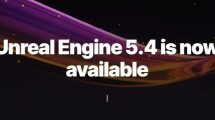Metro Exodus promises to be one of the blockbusters of 2019. In today's article, however, I do not want to judge the game itself, but only its "technological" aspect. Precisely because Metro Exodus had much more time for RTX On than for Battlefield V. Ray Tracing, DLSS, but also Advanced PhysX and HairWorks. But how does it work in practice? This detailed analysis will make it possible to find out exactly that.
GeForce RTX 2060 – Full HD with 1920 x 1080 pixels
The average FPS of the GeForce RTX 2060 with RT Off and RT High without DLSS are still quite close together, but the values for the 99th percentile, well. This can also be seen again in the individual graphics for the frametimes and variances. Because there's an animalistic RT-Hoppelhäschen-Cinema with 25.5. If you activate DLSS, that improves to 32.5 and the average FPS is one tick better than without RT, but with DLSS. Only the layer of fat on the eyes has to be wiped away from time to time, because it seems a lot of things to be blurred.

Metro Exodus - FPS - RTX 2060 1080p Ultra Preset

Metro Exodus - AvFPSoB - RTX 2060 1080p Ultra Preset

Metro Exodus - FrameTime - RTX 2060 1080p Ultra Preset

Metro Exodus - FPS99th - RTX 2060 1080p Ultra Preset

Metro Exodus - FrameTimeVariance - RTX 2060 1080p Ultra Preset

Metro Exodus - FrameTimeoB - RTX 2060 1080p Ultra Preset

Metro Exodus - Unevenness - RTX 2060 1080p Ultra Preset
The next gallery shows all the individual graphics for the frametimes, the variances and the unevenness index:

Metro Exodus - no RT - DLSS - FrameTimeSolo - RTX 2060 1080p Ultra Preset

Metro Exodus - no RT - FrameTimeSolo - RTX 2060 1080p Ultra Preset

Metro Exodus - RT High - DLSS - FrameTimeSolo - RTX 2060 1080p Ultra Preset

Metro Exodus - RT High - FrameTimeSolo - RTX 2060 1080p Ultra Preset

Metro Exodus - no RT - DLSS - FPSvsFrameTimeDiff - RTX 2060 1080p Ultra Preset

Metro Exodus - no RT - FPSvsFrameTimeDiff - RTX 2060 1080p Ultra Preset

Metro Exodus - RT High - DLSS - FPSvsFrameTimeDiff - RTX 2060 1080p Ultra Preset

Metro Exodus - RT High - FPSvsFrameTimeDiff - RTX 2060 1080p Ultra Preset

Metro Exodus - no RT - DLSS - Unevenness - RTX 2060 1080p Ultra Preset

Metro Exodus - no RT - Unevenness - RTX 2060 1080p Ultra Preset

Metro Exodus - RT High - DLSS - Unevenness - RTX 2060 1080p Ultra Preset

Metro Exodus - RT High - Unevenness - RTX 2060 1080p Ultra Preset
GeForce RTX 2060 – QHD with 2560 x 1440 pixels
QHD remixes the cards. Without RT, the card is always faster, whether with or without DLSS. DLSS helps to the same extent with the average FPS and the percentiles, look at them. For QHD and RT On without DLSS, however, you have to have nerves of steel, because it runs quite unrounded. DLSS can cushion this a bit, but here the GeForce RTX 2060 is definitely already pushing its limits. It goes, but the fun factor is in the basement, hidden somewhere between the potatoes and Grandma's old bike.

Metro Exodus - FPS - RTX 2060 1440p Ultra Preset

Metro Exodus - AvFPSoB - RTX 2060 1440p Ultra Preset

Metro Exodus - FrameTime - RTX 2060 1440p Ultra Preset

Metro Exodus - FrameTimeVariance - RTX 2060 1440p Ultra Preset

Metro Exodus - FPS99th - RTX 2060 1440p Ultra Preset

Metro Exodus - FrameTimeoB - RTX 2060 1440p Ultra Preset

Metro Exodus - Unevenness - RTX 2060 1440p Ultra Preset
The next gallery shows all the individual graphics for the frametimes, the variances and the unevenness index:

Metro Exodus - no RT - DLSS - FrameTimeSolo - RTX 2060 1440p Ultra Preset

Metro Exodus - no RT - FrameTimeSolo - RTX 2060 1440p Ultra Preset

Metro Exodus - RT High - DLSS - FrameTimeSolo - RTX 2060 1440p Ultra Preset

Metro Exodus - RT High - FrameTimeSolo - RTX 2060 1440p Ultra Preset

Metro Exodus - no RT - DLSS - FPSvsFrameTimeDiff - RTX 2060 1440p Ultra Preset

Metro Exodus - no RT - FPSvsFrameTimeDiff - RTX 2060 1440p Ultra Preset

Metro Exodus - RT High - DLSS - FPSvsFrameTimeDiff - RTX 2060 1440p Ultra Preset

Metro Exodus - RT High - FPSvsFrameTimeDiff - RTX 2060 1440p Ultra Preset

Metro Exodus - no RT - DLSS - Unevenness - RTX 2060 1440p Ultra Preset

Metro Exodus - no RT - Unevenness - RTX 2060 1440p Ultra Preset

Metro Exodus - RT High - DLSS - Unevenness - RTX 2060 1440p Ultra Preset

Metro Exodus - RT High - Unevenness - RTX 2060 1440p Ultra Preset






































































Kommentieren